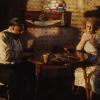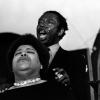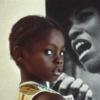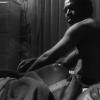You are here
Filmography
Featuring well-known L.A. Rebellion works alongside rarely seen student films, this body of work represents not only the originality of the individuals whose names are on them, but a collective vision as well. Across the two decades during which they made their presence felt at UCLA, and in the decades since, individual L.A. Rebellion artists have focused on diverse topics and responded to evolving political and artistic thought through their work. Explorations of class, considerations of historical legacies, stories attentive to concerns of local communities and appreciations of other Black arts are only some of the areas of exploration. The films also display a diversity of forms, from irreverent reconfigurations of well-worn genre types, to groundbreaking experiments with cinematic language. Certain works, long out of circulation, represent rediscoveries and will certainly lead to much future scholarship.
Learn more about the UCLA Film & Television Archive’s ongoing “L.A. Rebellion” inititiative.
| Title | Year | |
|---|---|---|
 |
African Woman, USA An African woman living in Los Angeles is happy when she receives a work permit. Things seem to be going her way until her daughter is raped. |
1980 |
 |
Analogy Former UCLA professor and mentor to countless L.A. Rebellion filmmakers Teshome Gabriel juxtaposes images of a soccer player and dancer. |
1972 |
 |
The Annihilation of Fish Mrs. Muldroone's boarding house is a home for eccentrics—including Mrs. Muldroone (Margot Kidder) herself. Joining her in bemusing pursuits is Fish (James Earl Jones), a retired janitor with a demon to wrestle, literally, and Poinsettia (Lynn Redgrave), who fancies herself the lover of Puccini’s ghost. Director Charles Burnett weaves this trio of characters into a charming romantic (yes, romantic) comedy that defies age and expectations. |
1999 |
 |
As Above, So Below A rediscovered L.A. Rebellion masterpiece, Larry Clark’s As Above, So Below comprises a powerful political and social critique in its portrayal of black insurgency. |
1973 |
 |
Ashes & Embers Nay Charles is an African American Vietnam veteran who no longer fits in, can’t find a job and is ultimately arrested by the police. Like his protagonist, Haile Gerima is both drawn to and skeptical of the black nationalist ideology. Finally, Gerima places his faith in African American youth, a vision of utopia after the grim lessons of contemporary race relations in America. |
1982 |
 |
Atilogivu: The Story of a Wrestling Match The film, by Ijeoma Iloputaife, is introduced as being about the Ibu people, east of the River Niger. No wrestling is depicted, but the entire film documents very gymnastic dancing to drum and flute music, perhaps a celebration in preparation for a wrestling match. At the very beginning of the film, a sign reads Girls High School, Umunze. |
1982 |
 |
Azz Izz Jazz Jacqueline Frazier’s Azz Izz Jazz showcases jazz legend Billie Harris who performs in studio with a quartet featuring Harris on soprano sax. |
1978 |
 |
Bellydancing — A History & an Art Alicia Dhanifu (M.F.A., UCLA), who appears in Jamaa Fanaka’s Emma Mae, constructs a rigorous history of belly dancing — its roots and history, forms and meanings. |
1979 |
 |
Black Art, Black Artists Director Elyseo Taylor visually surveys black art since the 19th century, punctuated with jazz and blues selections, and a running commentary by woodcut printer Van Slater. |
1971 |
 |
Bless Their Little Hearts Billy Woodberry's Bless Their Little Hearts chronicles the devastating effects of underemployment on a family in the same Los Angeles community depicted in Killer of Sheep (1977), and pays witness to the ravages of time in the short years since its predecessor. Nate Hardman and Kaycee Moore deliver gut-wrenching performances as the couple whose family is torn apart by events beyond their control. |
1984 |
Pages
To report problems, broken links, or comment on the website, please contact support
Copyright © 2025 UCLA Film & Television Archive. All Rights Reserved






 Mobile Navigation
Mobile Navigation

